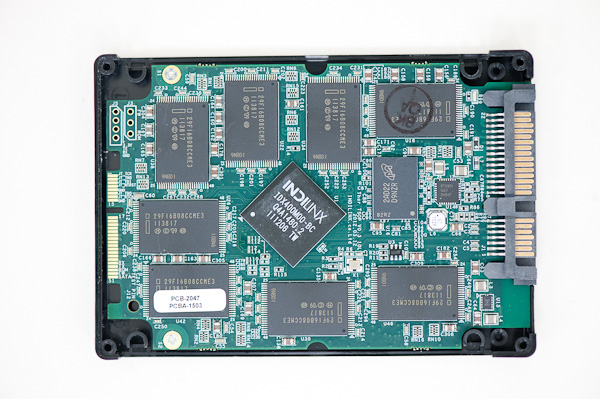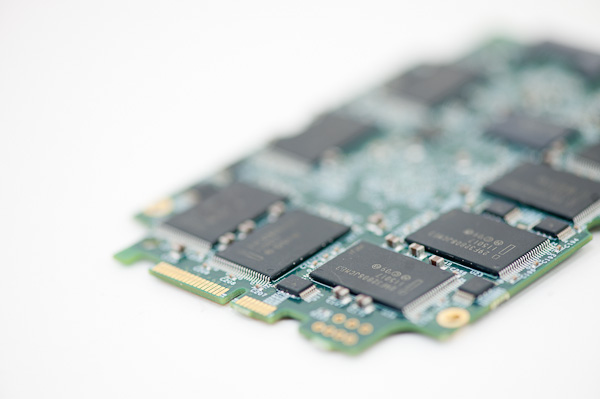OCZ Vertex 4 Review (256GB, 512GB)
by Anand Lal Shimpi on April 4, 2012 9:00 AM ESTFinal Words
After years of begging, OCZ has finally delivered much of what we've wanted in an SSD: low write amplification and very good random/sequential write performance. It could use a more aggressive real-time garbage collection algorithm but running an OS with TRIM, that's mostly picking nits. The Vertex 4 takes write performance seriously and delivers handsomely, besting even the latest from Intel and Samsung. The advantage over SandForce is clear, particularly because Everest 2 and the Vertex 4 are able to deliver consistent performance regardless of data composition. SandForce's realtime compression/dedupe technology is definitely exciting, but if you're able to deliver similar or better performance without the inconsistency of data-dependency the choice is obvious. SandForce definitely set the bar very high with the SF-2281, but Everest 2 has the potential to exceed it - assuming OCZ/Indilinx can deliver on its promises.
Sequential read performance is unfortunately just as important for client workloads, and the Vertex 4 doesn't do nearly as well there. If OCZ is able to improve its low queue depth sequential read performance through a firmware update in the coming weeks, it will truly have built a drive (and controller) that are among the fastest on the market. I see no reason that OCZ shouldn't be able to achieve this given the sequential read performance we saw from Octane, but as is always the case with these types of launches we have to review the product we have, not the product we'll get.
Should nothing change, the tradeoff is an interesting one. OCZ effectively gives us three of the four corners of raw performance, and competitive sequential read speeds under heavy load. Does giving up the bottom end of sequential read performance matter? For users with very write intensive or generally IO heavy workloads, the tradeoff is likely worth it. It almost feels like OCZ should have launched the enterprise version of the Vertex 4 first, given its strengths. For more typical mainstream client workloads, the Vertex 4 isn't as good of a fit. The drive is still usable, but it's far from industry-leading when it comes to low queue depth read speeds. Admittedly it is industry-leading in write performance even in mainstream workloads, but the combination of the two is really what's missing. As we demonstrated with our copy test, the Vertex 4 is able to deliver good real world read performance but as our Light Storage Bench suite shows the read performance isn't consistently high. It's a frustrating dynamic, one that I truly hope is mitigated with the next firmware release as OCZ has promised.
Idle power consumption is also a concern of mine. As it stands, consuming over 1W when doing nothing isn't ok for a notebook drive. OCZ tells us a fix is on the way for this as well, but someone buying today needs to keep this in mind if it's going into a portable. The impact to overall battery life shouldn't be tremendous, but if you're on a quest to squeeze every last minute out of a single charge you may want to consider some of the alternatives.
Validation is and has always been a hot topic with every new SSD. OCZ is taking things more seriously and more importantly, has better access to fix bugs as they come up. With direct access to the firmware source code (a benefit of owning Indilinx), OCZ shouldn't have the same limits it has had in the past when working with third party controller vendors. The presumption is that now, if bugs come up in the field or during testing, they can be addressed as quickly as the Indilinx firmware engineers can type out a workaround. It remains to be seen how this works in practice, but the concept is at least sound.
In the end, as with most brand new controllers and SSD reviews our conclusion is to wait. Vertex 4 is a unique drive that really delivers a lot of what we've been asking for from a performance standpoint, but with some tangible caveats that we're told will be resolved in the coming weeks. If you're buying an SSD today, our standarding recommendation (particularly for Mac users) is Samsung's SSD 830. If you have a workload that demands better write and/or random read performance, let's see how this and other soon-to-be-announced drives behave over time before jumping the gun.












127 Comments
View All Comments
vol7ron - Wednesday, April 4, 2012 - link
Exactly, and it's where power consumption matters even more.I'd also like to see where the OWC drives fit in.
ViviTheMage - Wednesday, April 4, 2012 - link
There are plenty of lower pwer SSD's that have similiar tasty iops, so you won't be disappointed...the falvouring is a little different, but you will still enjoy it.ckryan - Wednesday, April 4, 2012 - link
I very much expect the next generation of Marvell drives to look similar in some respects to the V4.I applaud OCZ for doing things differently, but they're probably just trying to beat the next wave of Marvell powered drives to market, not making up for SFs immediate deficiencies.
ViviTheMage - Wednesday, April 4, 2012 - link
Do you think Marvell can release a drive with as many delicious iops?Kristian Vättö - Wednesday, April 4, 2012 - link
Not Marvell, because they only make controllers ;-)Plextor M3 Pro is already providing up to 75K/69K IOPS (read/write). Marvell released a new controller a couple of weeks ago and at least according to the press release, random speeds should be substantially improved with a great firmware. How fast is still a question but I wouldn't be surprised to see figures similar to Indilinx 2.
And as a side note, Plextor M3 review should be up later today or tomorrow as well :-)
ckryan - Wednesday, April 4, 2012 - link
The M3P is fantastic. It's like the V4 without the compromise. Plus, I'd take better low QD performance any day of the week over high QD performance. The M3P is a lot more balanced.Plus, yeah, the 830 is awesome too, but it doesn't really cater to the super high 4Krw crowd. I feel like OCZ just needed to get this drive out before then next wave of similar drives hit, and will later tweak the FW to better accommodate desktop workloads.
But it does accomplish one thing -- whatever FW/FTL they strapped on that drive doesn't look like anything else at the moment. It's certainly easy to see in an ocean of charts.
I think OCZ just mainly wanted to reverse their years of SF marketing practice with the V4 -- Latency is now important. Compressible data is out. They just had to wait until they had a product that could match the paper specs of the 2281. Ironically, I'd take it over a V3 any day of the week, but the 2281 is still better with most workloads.
etamin - Wednesday, April 4, 2012 - link
Perhaps the V4 may turn out to be a more economical choice though because it is entirely developed in house.jwilliams4200 - Thursday, April 5, 2012 - link
LOL. Except for the rebadged Marvell controller and the flash memory, yeah, entirely in house.rw1986 - Friday, April 6, 2012 - link
rebadged MRVL controller?? can u elaboratejwilliams4200 - Friday, April 6, 2012 - link
Did you ever wonder why Indilinx took so long to come out with a 2nd gen controller after their first was so popular?Well, they didn't. Not really. OCZ does not want you to know that they have a relationship with Marvell, and their new controller is basically a Marvell 88SS9187. It would be hard to justify the shareholder money OCZ spent on acquiring Indilinx if the truth were known.
If you have any doubts, look at the press release from Marvell press release bullet points and compare them to the features OCZ is touting in the Vertex 4. They are identical.
http://www.marvell.com/company/news/pressDetail.do...